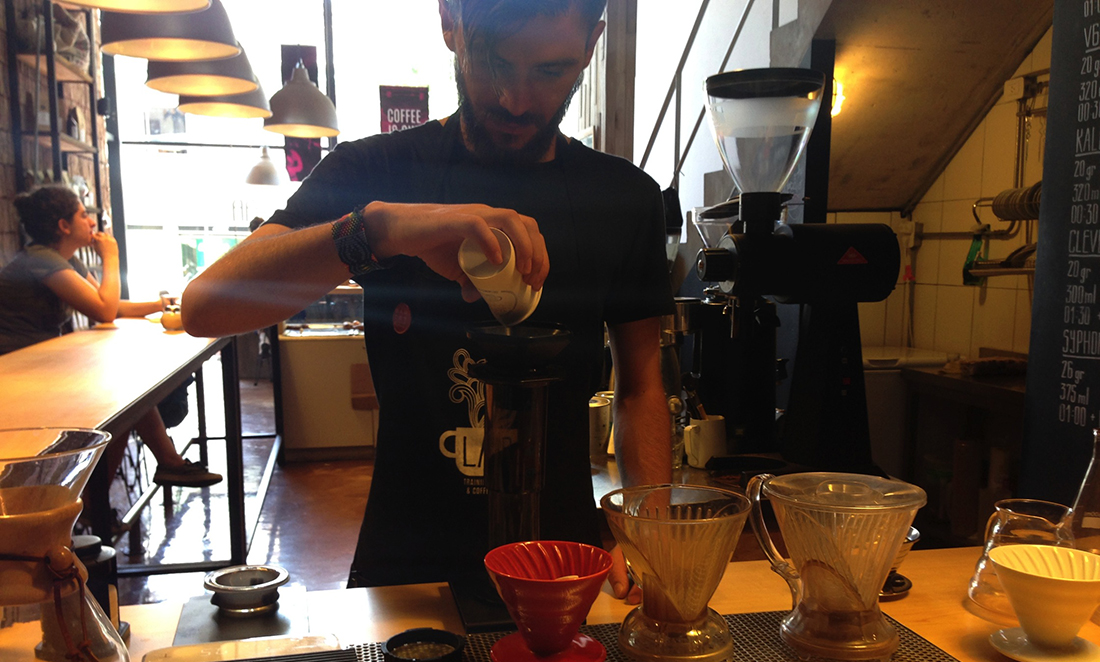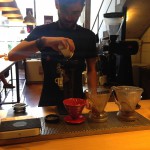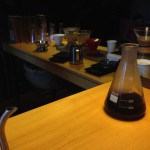By Siying Li
Javier Gonzales grew up working in Bar El Progreso, just on the border of the upscale Palermo in Buenos Aires, Argentina. His family owns the 106-year-old café. Like most Argentine cafés, the coffee drinks Gonzales serves at Bar El Progreso are traditional espresso and espresso with milk.
On a recent afternoon at Bar El Progreso customers played pool or read the newspaper. A TV blared the latest news and two ceiling fans squeaked in harmony. There was no air conditioner in this traditional cafe.
“Young people don’t come here nowadays. They go to Starbucks, ” Gonzales said.

Cafés can be found at almost every corner in Buenos Aires, a city with a leisurely sit-down coffee culture in a continent famous for coffee beans. But the legacy is challenged by some new coffee drinking trends.
One of them inevitably comes from the American “coffee to go” chain. Starbucks opened its first store in Argentina in 2008, and more than 60 stores have invaded Buenos Aires since.
“Starbucks cafés are always crowded with students, ” said Gaston Carvajal, 38. “I like it too, for the iced drinks I can get there. ”
Luciano Banchero, 30, an Argentinian radio journalist, said his choice at Starbucks would always be an Americano, espresso topped with hot water.
“You can’t go wrong with Americano,” Banchero said.
To many young people in Argentina, Starbucks offers a popular alternative to traditional Argentine cafés.
“The atmosphere at the Argentine cafés is good, but the coffee there sucks, ” said Sonja D’cruze, a writer originally from Manchester, England, who has spent her past four years living in Buenos Aires.
Even Banchero agreed. “People here drink coffee every day, but the flavor is really not good, ” he said.
In the pursuit of a better flavor, Banchero usually goes to the new Argentine café LAB to start his day. Featuring its own roasting machine and various brewing devices, LAB opened a year and a half ago in Palermo, only three blocks away from Banchero’s home.
“The guys here know what they’re doing to the coffee beans. They have the right coffee, ” Banchero said.
At LAB, young Argentines were drinking flat white, Americano and freshly-brewed coffee from air press, V60 and Chemex brewing devices. According the barista Diego Baetcker, this allows the coffee beans to brew into experimental flavors.
“Coffee can change every day and every time. With these devices, we can control the temperature and the water amount to control and fix the flavor,” said Baetcker. “It’s a skill to understand how espresso develops during the process. ”
“The ordinary espresso machine is automatic, and the beans only come out in one flavor, ” Baetcker said.
With so many possibilities of flavors enabled by these fancy methods, Banchero said he only goes to the old Argentine cafés when he has no other choices.
“To me, going to an Argentine café is a cultural thing,” Banchero said. “People go there for social gatherings, not for coffee. ”
“It’s porteño—a word Argentines use to describe a very Buenos Aires thing, ” Banchero said.

And this porteño flavor connects old Argentines. While the young generation grabs a Starbucks iced laté in Palermo, these people stick to their pool games and politics, chatting with a bunch of old friends on an 80-degree afternoon while sipping hot espresso.






